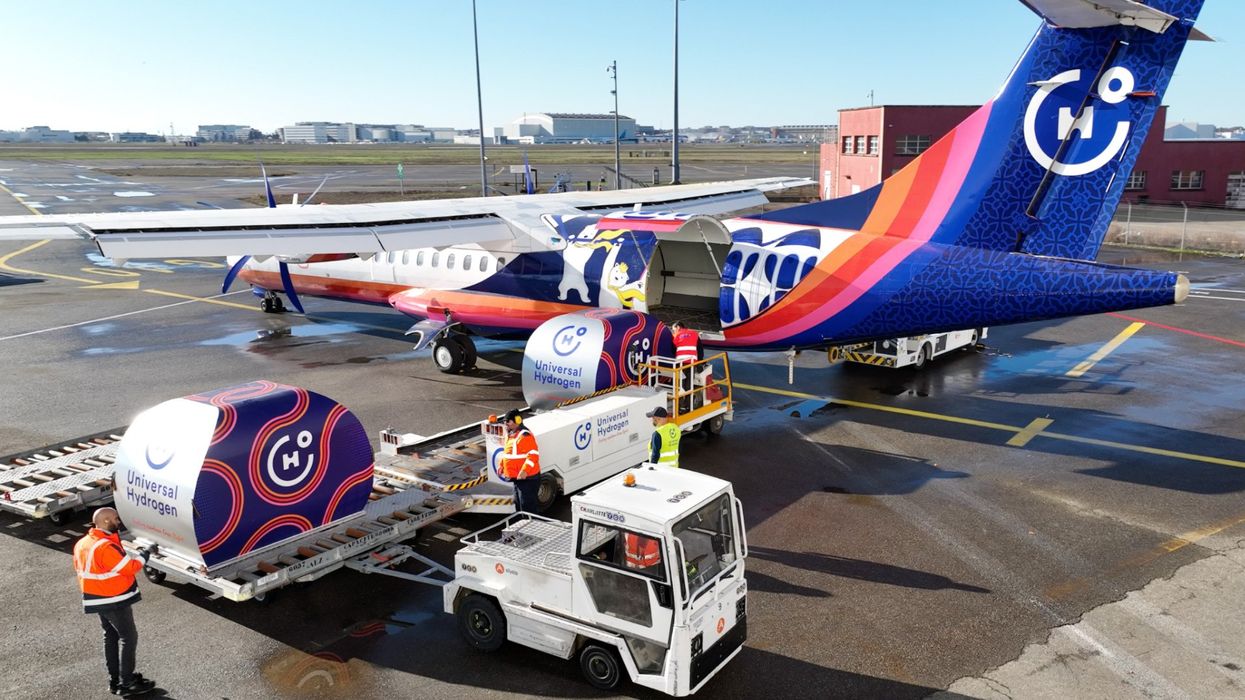

This article is part of our exclusive IEEE Journal Watch series in partnership with IEEE Xplore.
As investment in hydrogen-powered flight expands, airports and air carriers today are realizing that it’s not enough to retrofit or design new planes for hydrogen power. So while researchers and companies large and small invest in the zero-carbon future of the field, others are beginning to study what supplies and infrastructure on the ground would also be needed to make hydrogen aviation a reality.
“Hydrogen may be a good thing, but you gotta look at it from the full system level, right?,” asks Professor R. John Hansman, an aeronautics and astronautics professor at MIT and director of the university’s International Center for Air Transportation. “Because it won’t work unless you have all the pieces to make it work as an operating system. There’s a lot of technology that would have to be developed.”
Chicago O’Hare would demand the equivalent of 719 tonnes of liquid hydrogen per day.
The first challenge is hydrogen production. A paper co-authored by Hansman and several MIT students—and presented this summer at the IEEE International Conference on Future Energy Solutions at the University of Vaasa in Finland— considered the case of supplying enough liquid hydrogen for 100 airports worldwide, each with long-haul flights. (Only a few hundred airports support flights that travel more than 4,800 kilometers globally.)
The idea, Hansman says, was to focus on a smaller set of airports and, theoretically, limit the potential new infrastructure that might be required by hydrogen-powered flight. But just supporting liquid hydrogen-powered long-haul flights at these airports would amount to more than 30 percent of current global nuclear energy production per day, according to the researchers’ calculations. Chicago O’Hare, for instance, would demand the equivalent of 719 tonnes of liquid hydrogen per day.
And the hydrogen would have to either be produced through clean or nuclear energy to provide real climate benefits, the paper noted.
The research hinted at other logistical challenges, too, including transporting and storing hydrogen in an efficient way. For example, according to the researchers, maintaining two days’ worth of liquid hydrogen for long-haul flights at Chicago O’Hare would require five storage tanks equal to the size of the liquid hydrogen storage tank at the NASA Kennedy Space Center—the largest in the world as of 2021.
It’s possible that some airports could produce hydrogen onsite, the researchers added, but others might not have the room.
Liquid hydrogen could require a new loading process, too. Fueling hydrogen in a way that’s similar to standard jet fuel could require cryogenic machinery, since the liquid hydrogen would need to be transported at extremely low temperatures, according to Arnaud Namer, the chief operating officer at Universal Hydrogen, a hydrogen-focused transportation startup. This machinery could be expensive and heavy, he noted, and transporting hydrogen in this way could also create the risk of loss, creating less-than-ideal safety and climate impacts.
One company is developing modular hydrogen capsules, which can each carry around 200 kilograms of liquid hydrogen—the “Nespresso model.”
In a similar vein, a 2022 paper from researchers in Germany analyzing hydrogen refueling logistics considered the potential benefits of several different refueling systems, such as trucks and pipelines and hydrants. The primary method expected by Julian Hölzen, one of the authors of that project, are trucks.
“These are nearly available [and] commercialized today, easily scalable, come with relatively low capital costs, and at airports with no traffic constraints they are a perfect first step for LH2 aircraft refueling,” Hölzen said in an email. “The pipeline-and-hydrant option is the best option from an engineering perspective. But might not offer the economics for medium-sized airports and comes with less flexibility.”
Refueling raises another open question. Hydrogen, Hansman adds, is extremely flammable, which means fuel lines would need to be cleared. While NASA typically relies on helium, a new way to purge fuel lines may be needed to work for a commercial aviation setting.
“Let’s just say you want to refuel the airplane in an hour or two, right? Well, so it turns out, it’s tricky to do that,” he said.
Right now, there are other ideas, but they may not work for all kinds of flights. Universal Hydrogen is developing modular hydrogen capsules, which can each carry around 200 kilograms of liquid hydrogen. While Hansman notes this approach might not be workable for long-haul flights, Namer says this technology could be used on any sized aircraft.
“That’s similar to the Nespresso model. You actually use capsules, where you fill the hydrogen at the production site with these capsules,” explains Namer. “In that sense, there’s no infrastructure development to be done at the airports or on the ground handling because you’re moving your fuel like you’re moving cargo with the same kind of equipment.”
Reference: https://ift.tt/ryM4Bhv
No comments:
Post a Comment